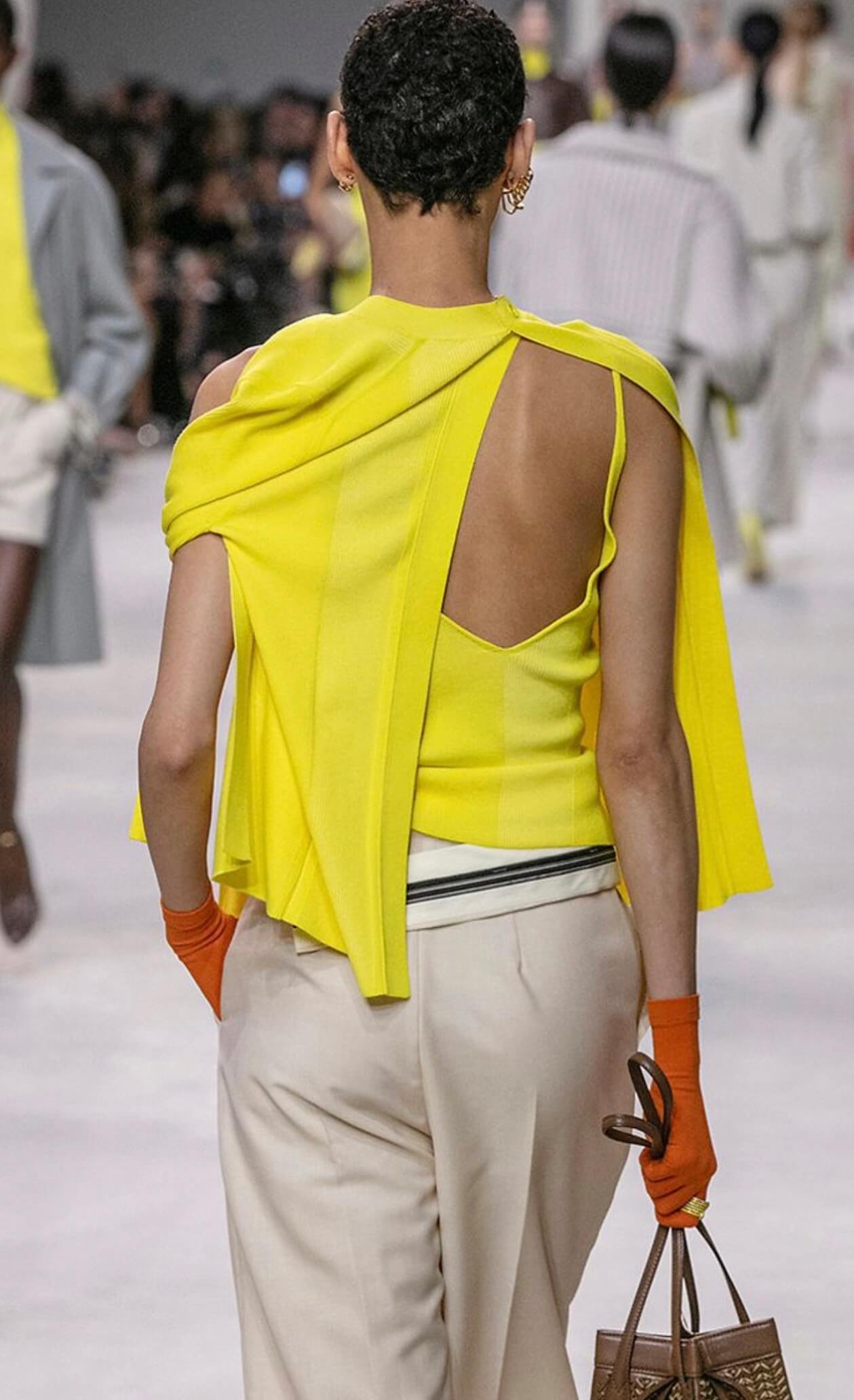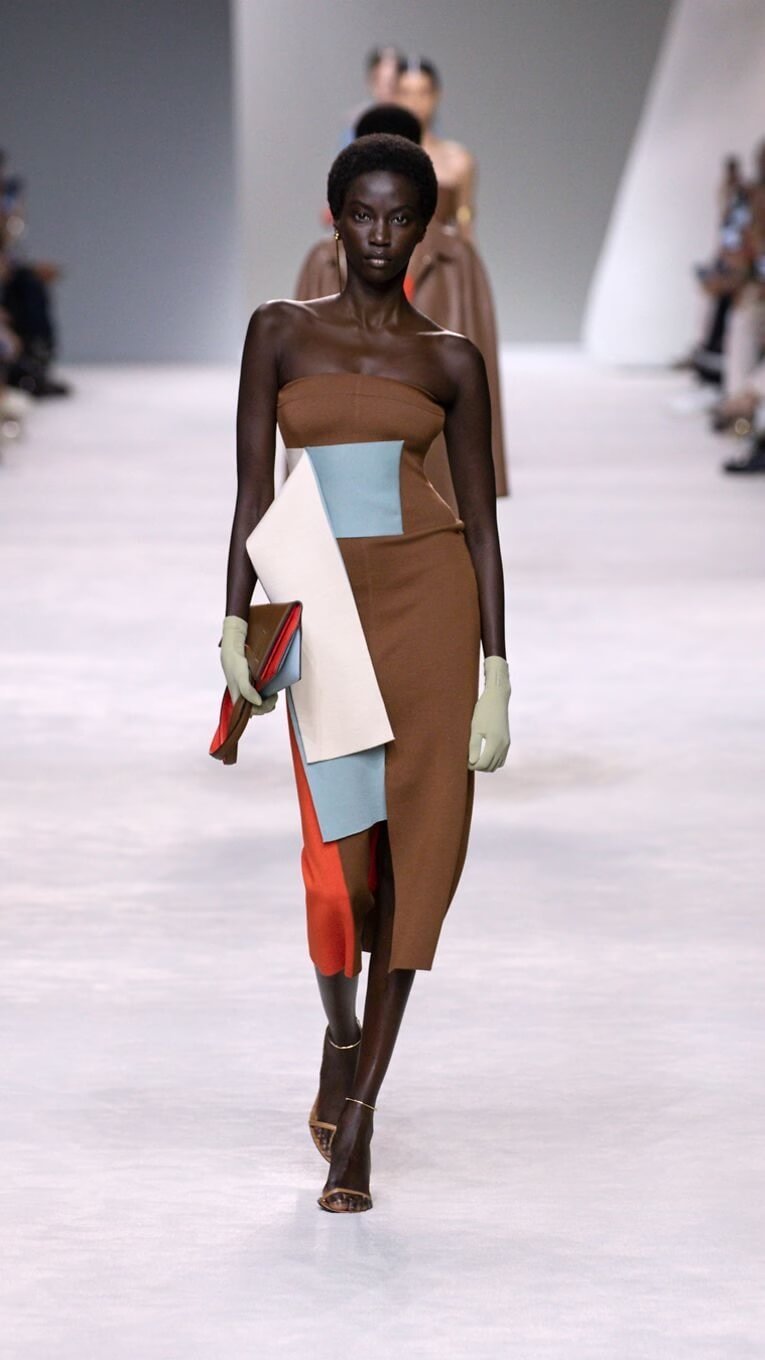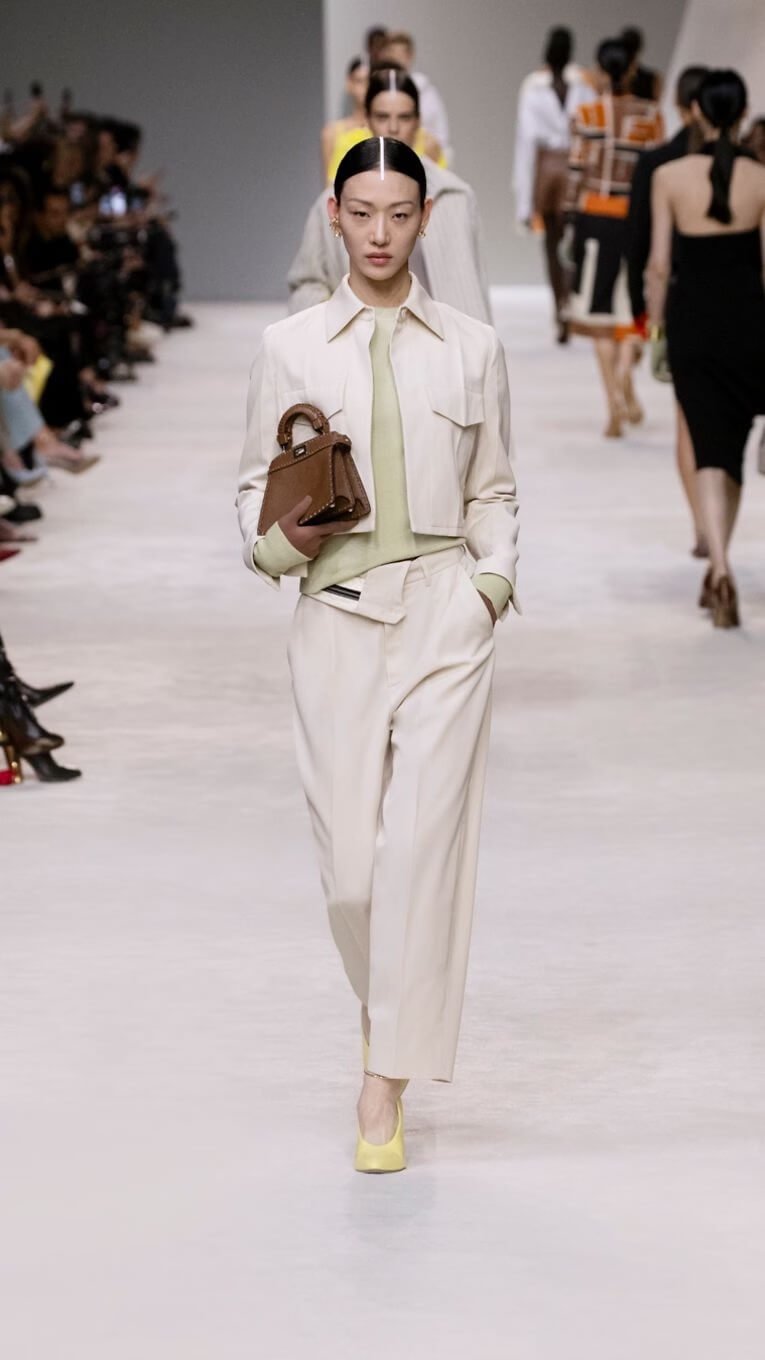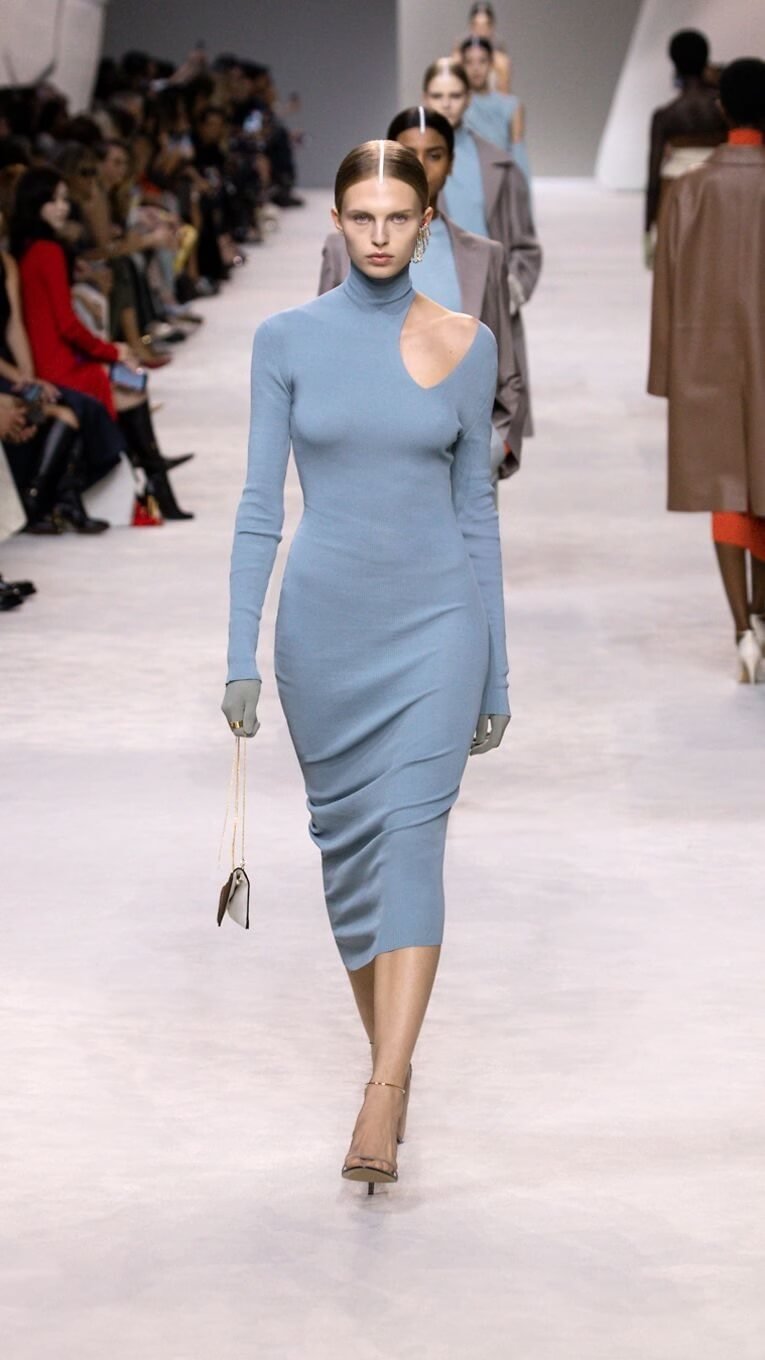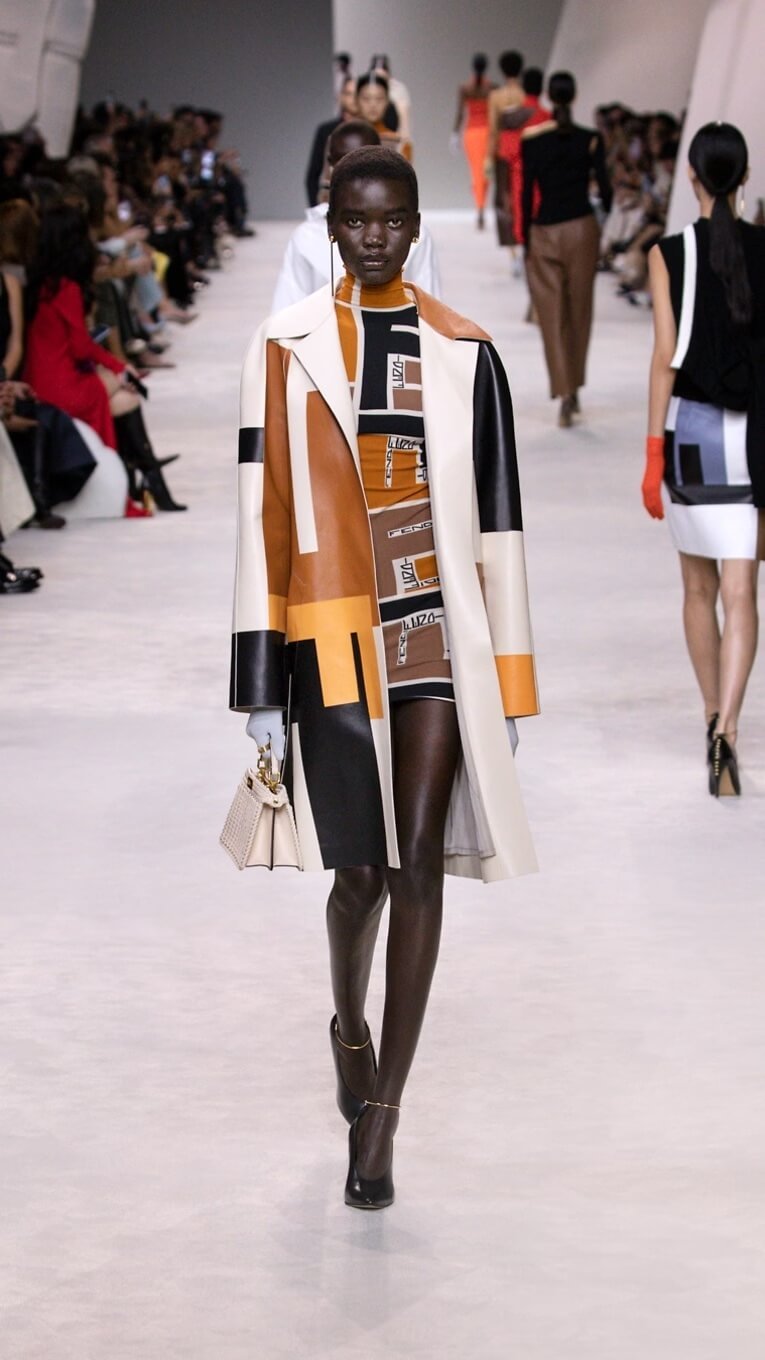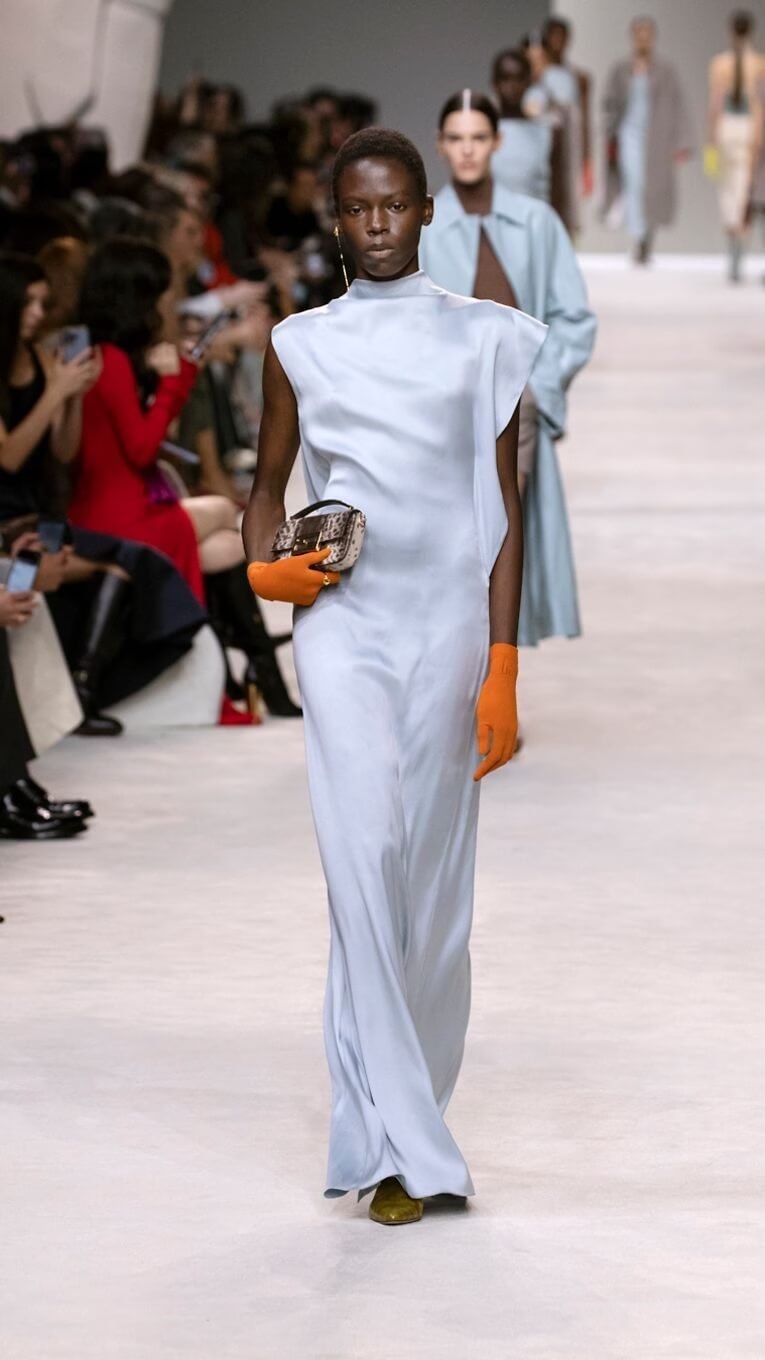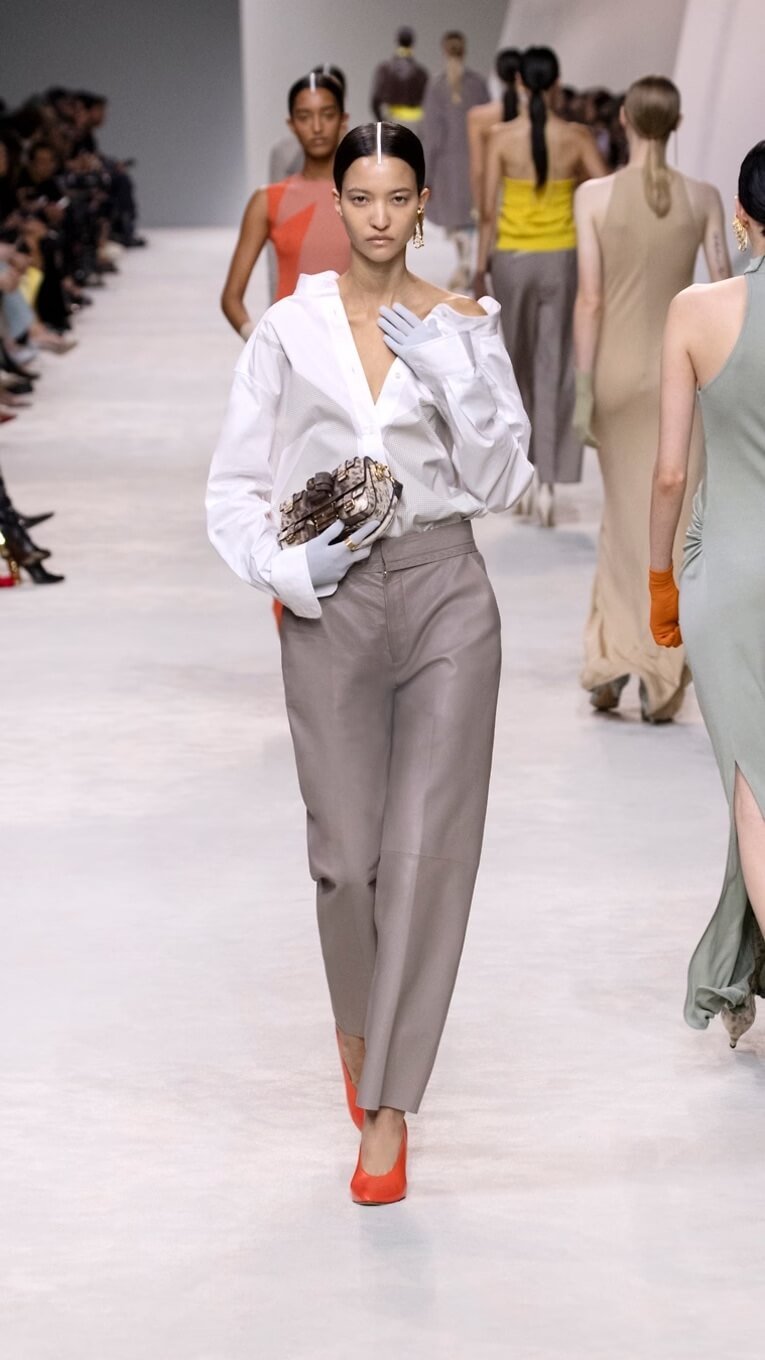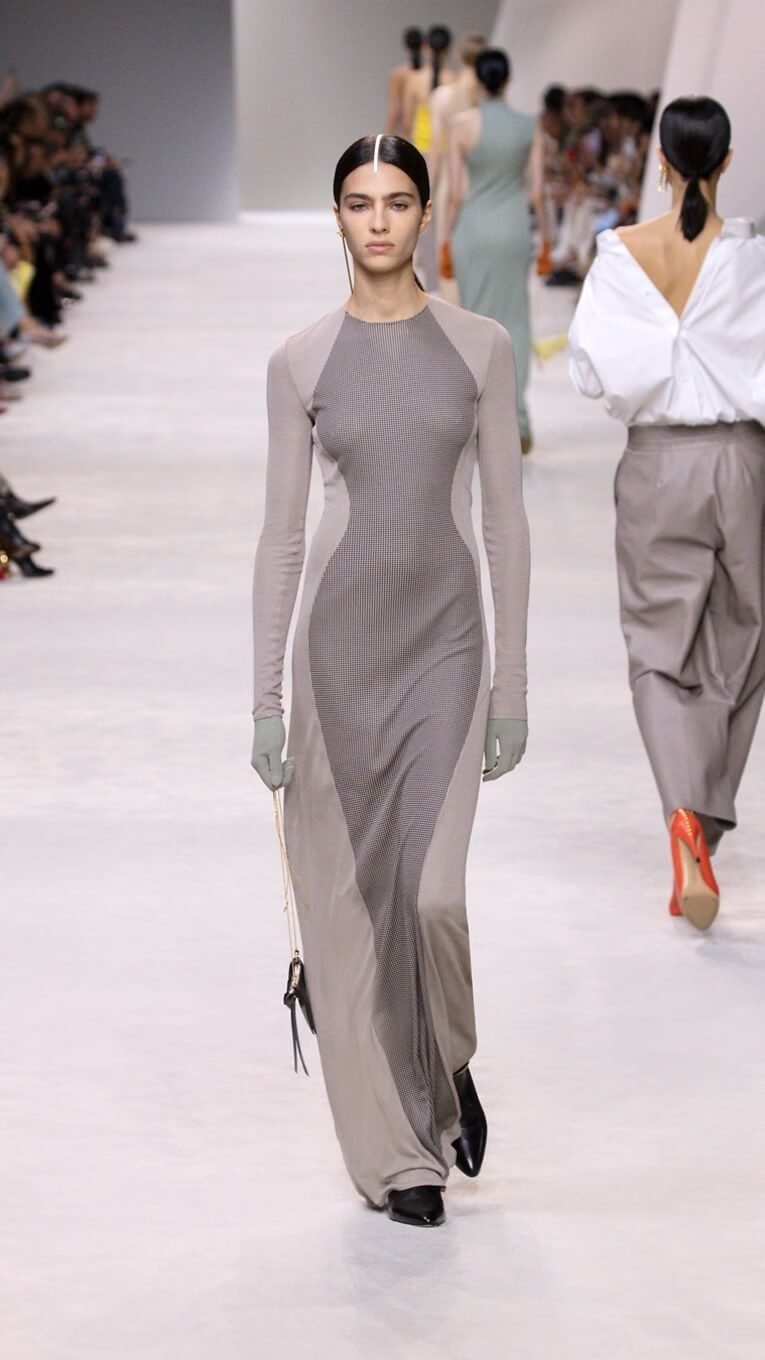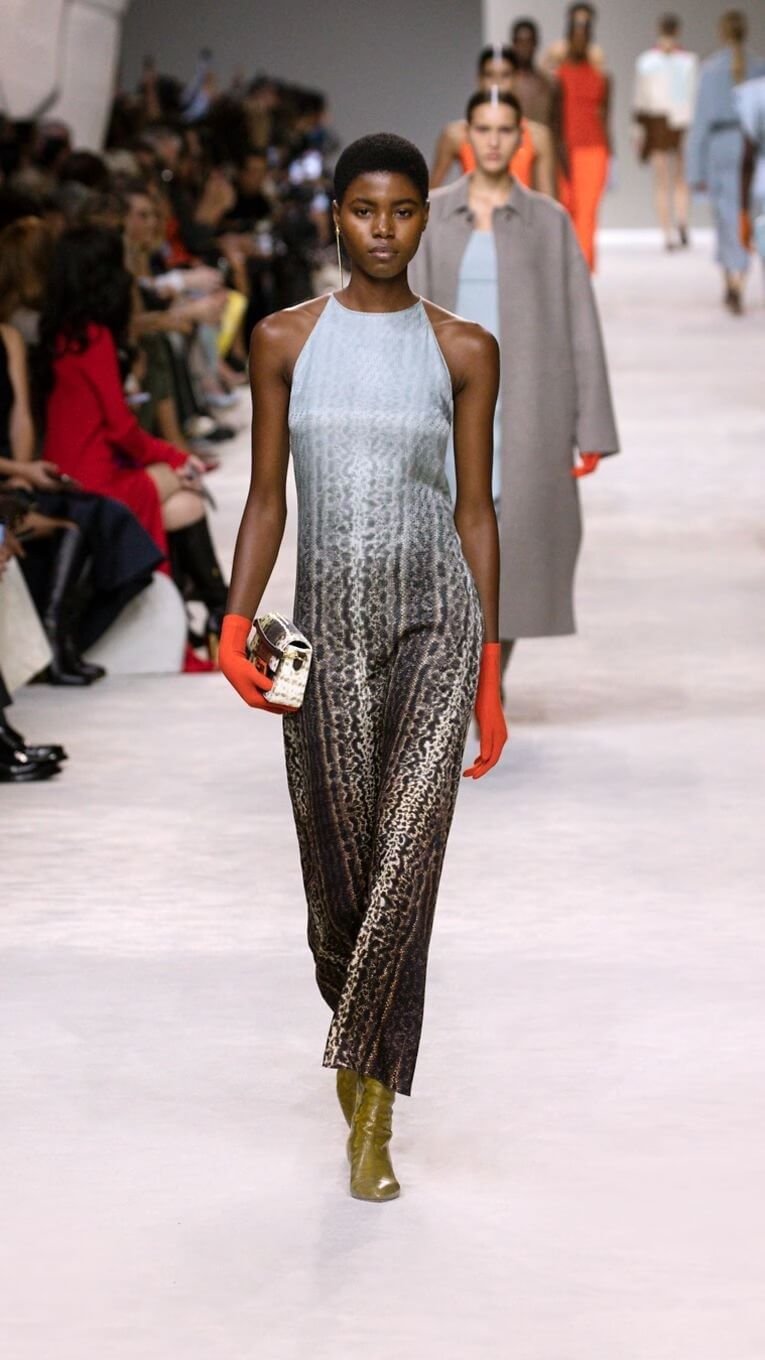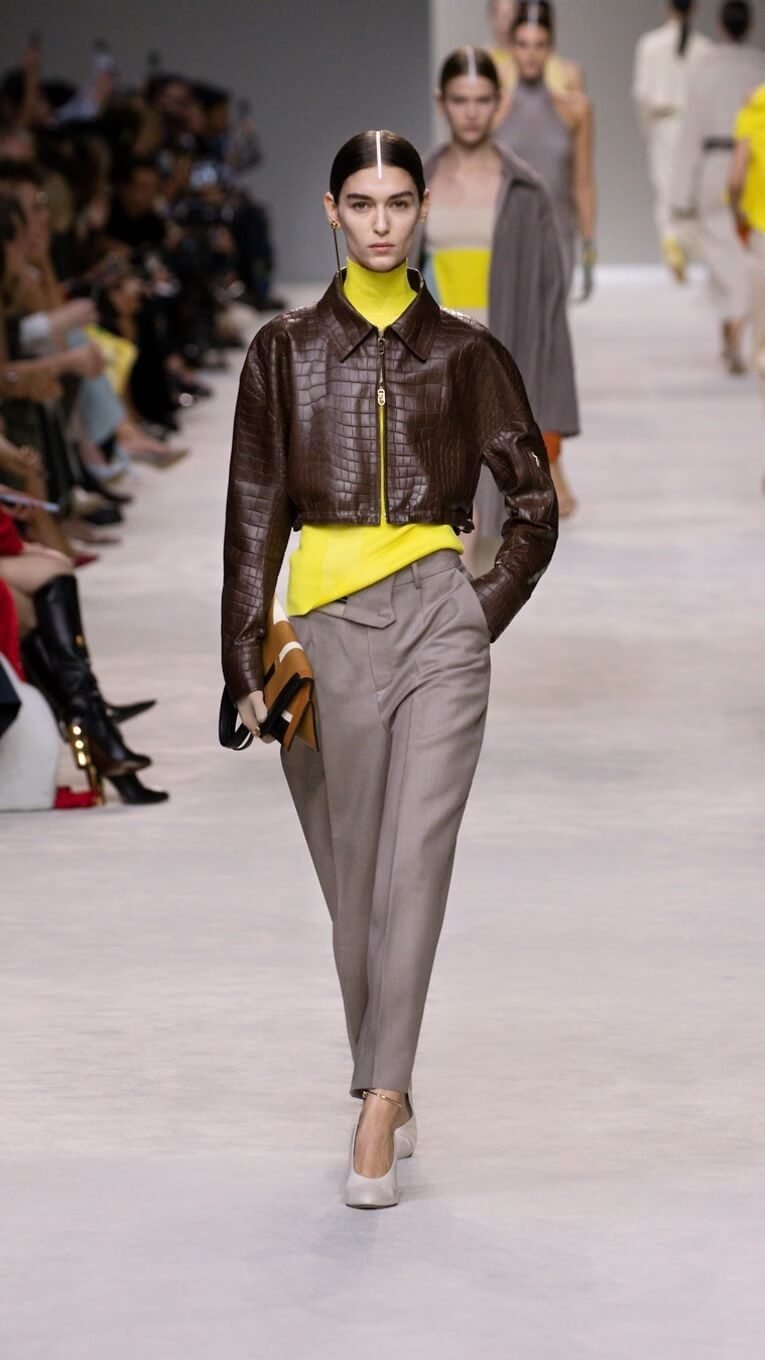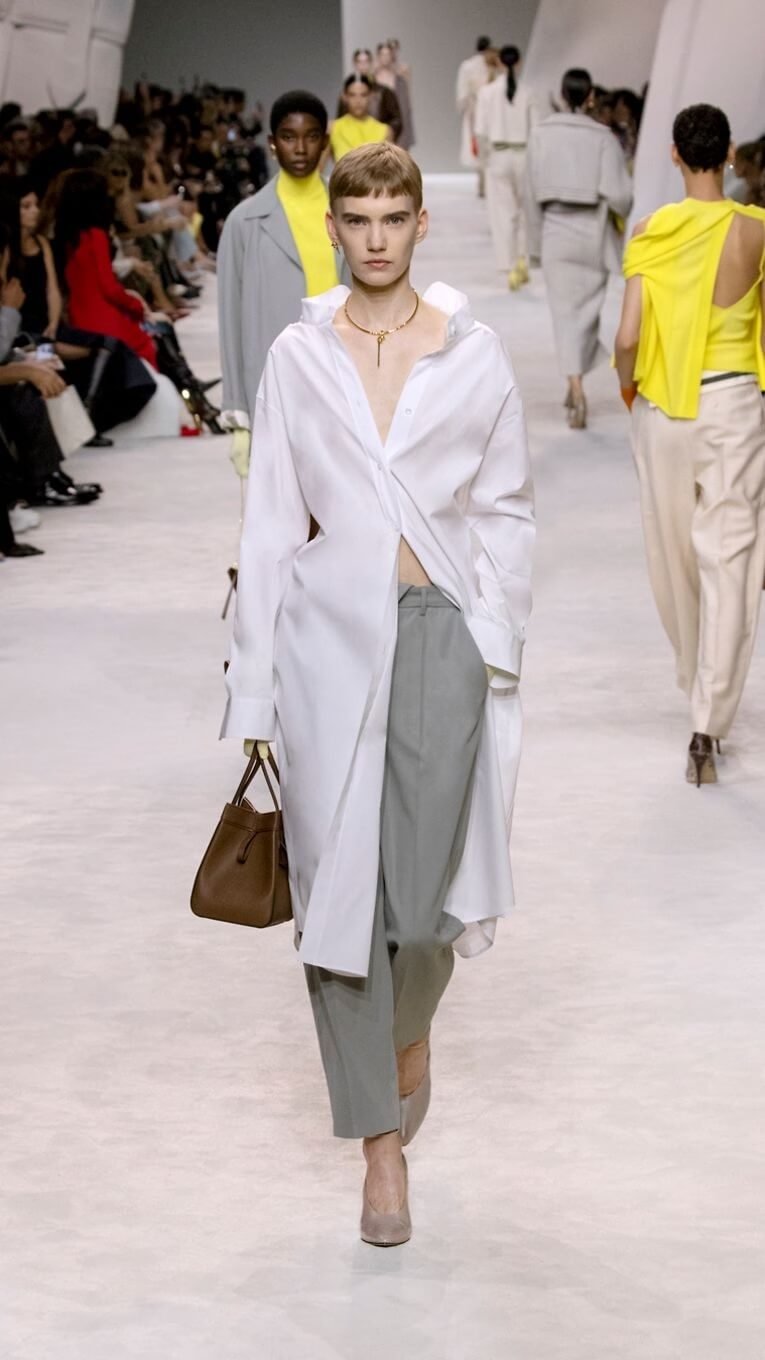Spring fashion trend: Fendi S/S 2024
What would a procession of Fendi characters look like as they strolled through the streets of Rome - past and present? This is precisely the idea that inspired Fendi women’s creative director Kim Jones in his latest spring-summer 2024 collection. Speaking on the collection, Kim Jones explained:
"In Rome, there is an elegance in ease and not caring what anybody else thinks – that is real luxury. It's not about the spectacle of being looked at but the reality of wearing and the confidence and chicness that comes with it."
The collection featured a variety of different looks that elegantly wove together the sartorial legacy of Roman women in interesting and modern ways. Speaking to The Guardian, Kim Jones explained:
"I wanted that very noble, Roman silhouette, but to clean it up."
The layered tunic dresses of the past were simplified into elegant column dresses, made from flowing silk. The stola, a long dress that tied at the shoulders, was reimagined as flowing maxi dress. The Palla – a shawl worn by citizens – was recreated as a long collar that extended over the shoulders onto the other side. There was also an interesting arrangement of long-sleeve dresses and cardigans worn off-centre, with their long arms tied over one shoulder. A literal display of ‘throwing it on’ that delivered on the theme of insouciant elegance, as well as recapturing the drapery of Roman womens’ fashion.
The collection also brought to life modern elements of Roman style such as cropped leather jackets, crisp white shirts, and relaxed-fit trousers. Sub-themes of symmetry and asymmetry were also present throughout the collection, notably through the use of asymmetric neck and hemlines, as well as tops and dresses with a cold-shoulder detail. Even traditional tailored trousers were given an asymmetric waist detail (see above right image). Many pieces from the collection were modest fashion-friendly such as the maxi dresses, relaxed trousers, and loose-fitted tops.
One of the most striking aspects of this collection was the use of colour contrast inspired by the Mondrian and De Stijl movement. The juxtaposition of cool blue tones, dark brown, and neutral beige with vibrant brick orange or bursts of canary yellow created a visually striking aesthetic. Not only did the collection have a high degree of aesthetic coherence, but each individual piece was also perfectly colour-balanced and perfectly asymmetrical (in keeping with the De Stijl philosophy). Even the sometimes-loud Fendi monogram was subtly integrated into the designs, appearing as an innocuous geometric pattern on tops and dresses, so subtle that it could easily be missed. Other times, the iconic F seamlessly blended in with the snake print, creating an interesting optical illusion. This understated approach allowed the garments to take centre stage, emphasising the collection, and the brand's, focus on refined simplicity.
An inescapable peculiarity of the collection, for me, was the poignant feeling of the show. For instance, the use of the song "Bitter Earth," not the hopeful Dinah Washington version, but the more moody Max Richter edit. The slow, stoic walk of the models, the choice to hold the show in the imposing yet sterile Palazzo della Civiltà Italiana. These artistic choices imbued the show with a melancholic grandeur, bringing forth a sense of transience and insignificance. Long after we are gone, parts of us will remain in things we made, wore, sang, and they might be repurposed to tell new stories.
This collection is expected to be the final presentation from Kim Jones, who has been with Fendi since 2020. Recent collections from the fashion house have been critiqued for lacking a distinct identity. Like many fashion houses, Fendi produces highly wearable pieces made to high standards. However, it has faced issues in curating distinctly Fendi pieces that do not rely on animal skin (which has become unpopular) or the F logo (which has become outmoded). From my view point this collection did present a uniquely Fendi collection. I do not subscribe to the idea that fashion houses must compete on being extravagant, or sticking so closely to a particular look that they verge on becoming repetitive. The Fendi brand is good taste. The Fendi identity is elegant, timeless apparel, something an Italian woman with impeccable taste might wear. For Kim Jones specifically, I can see a clear progression in the identity of his work at Fendi; his journey might have started off uncertain, but it has certainly ended confident and bold.



